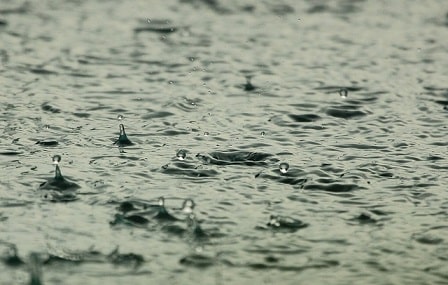 Conserving water both indoors and outdoors at home is becoming vital in the face of future water shortages due to a burgeoning population, global warming and changing weather patterns.
Conserving water both indoors and outdoors at home is becoming vital in the face of future water shortages due to a burgeoning population, global warming and changing weather patterns.
One of the easiest methods of water-conservation at home is to collect and store rainwater for use in the yard, garden and outdoor cleaning projects, by utilising simple catchment systems.
How to Install a Rainwater Collection System at Home
Installing a rainwater collection system at home is not as difficult as it sounds and Simple catchment systems with 160 – 400 litre storage capacities can easily be utilised to collect rainwater for use in the yard and garden.
While the water in the above systems is untreated and not meant to be utilised as drinking water, more complex systems which involve large cisterns, a water pump and a treatment system can also be installed for water that is to be used for drinking purposes.
Simple rain catchment systems using barrels can be installed quire easily by using the following tips:
- Choose the Correct Type of Barrel: Do not just use any old barrel; use a barrel specifically made for the purpose of collecting rainwater. Rain barrels are specifically designed with a wall thickness that can withstand the water freezing, the expansion of freezing water, and any distortion from the weight of the water. They also endure the effects of prolonged direct sunlight well. Your rainwater barrels should:
- Be opaque to curb algae growth
- Be manufactured of materials that do not leach toxic materials
- Be securely covered to prevent pets, small children and wildlife from getting in and possibly drowning
- Be screened to keep out debris
- Provide access for cleaning
- Consider the Location of the Barrel: Make sure that the barrel is not placed near stairs or any other structure that may offer children access to climbing onto the barrel
- Raise Barrels off the Ground: Rain barrels should be installed on a level surface to prevent tipping when the barrel is full. While the barrel can be set directly on the ground, raising it a bit will afford easier access and allow you to place a bucket under the outlet tap.
- Take Roofing Material into Consideration: While most roofing material will suffice, bear in mind that some, like asphalt shingles, may leach toxins. Runoff from such roofs should not be used for drinking or for watering the vegetable garden; use it for other non-edible garden watering. Roofs made of terra-cotta tile, slate, concrete, copper, untreated wood shingles, and epoxy-painted metal are satisfactory for collecting potable water.
- Attaching Taps and Hose Connections: make sure that the taps are screwed in straight; use only your fingers to screw them in as a wrench or pliers can damage the thread and cause leaks; the same goes for hose connections.
- Clean Gutters Regularly: Make sure that you clean your gutters regularly to ensure the cleanest delivery of water. Sloped gutters ensure a continuous water flow; debris will collect in any low spots, after which it will break down and contaminate the water and filter screen.
Be aware that many older gutters may be soldered at the seams, and this could lfeach into the water making it unpotable.
Buy water coolers online or get water cooler rental from Living-Water. Purchase office water coolers and natural spring water.





